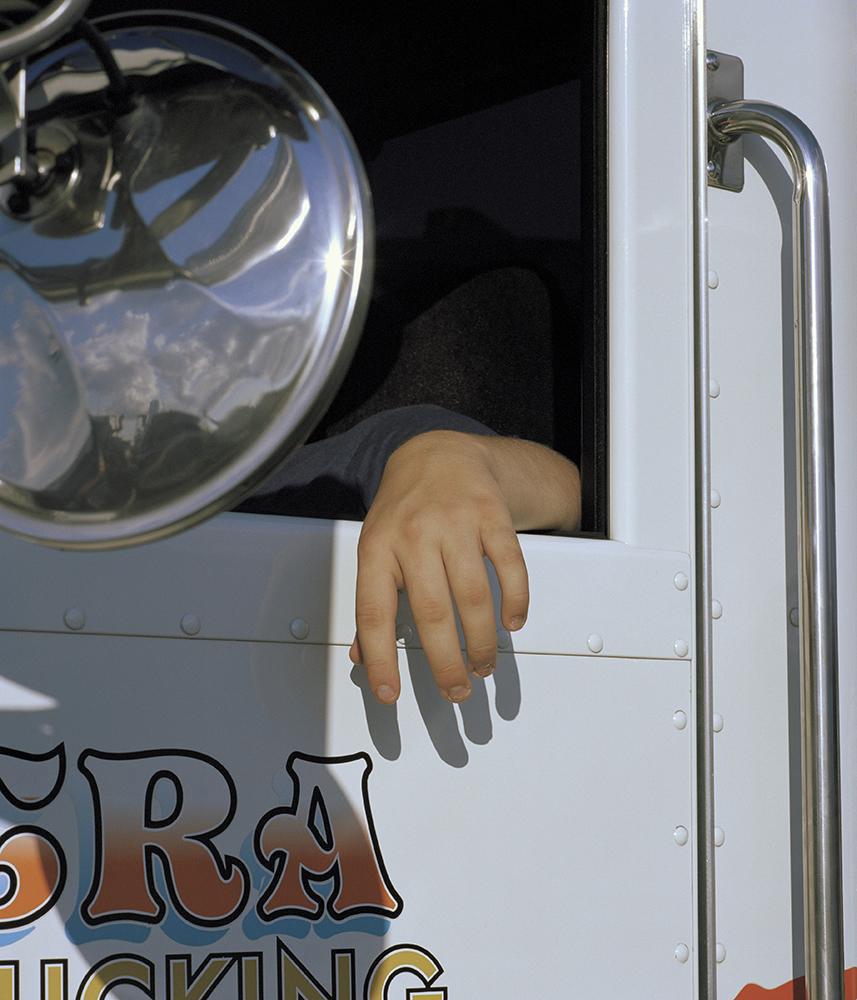
All photos by Ryan Shorosky
On a cold and sunny morning in October, 2013, I found myself sitting in the back of an empty Greyhound bus, alone, waving through the window to my parents. A look of nervousness appeared on my mother’s face while my father had a confident nonchalance.
As their faces disappeared in the distance, I looked at my backpack sitting next to me and up at the bus driver’s expressionless face through the rear-view mirror. I felt like I was a 12-year-old kid on his way to summer camp for the first time, even though I never had that experience. Instead, I was a 25-year-old with a degree in photography who decided that pursuing a life as a long-haul truck driver in the Midwest was the answer to my existential crisis. My interest in learning how to drive an 18-wheeler and living an anonymous and temporal life came from a father who had been driving trucks for nearly 25 years. I wanted to escape what I had known and uncover something new.
Videos by VICE

Over the next 12 months, I ended up visiting every state in the country at least twice, driving 500-600 miles a day, nearly seven days a week, getting to know almost every interstate from I-10 to I-90 and I-5 to I-95. I saw the country through all the freedoms and limitations that only a long-haul truck driver can: From eating an orange atop my truck in an empty rest area parking lot in some remote part of western Montana on a clear winter’s night, underneath what felt like every single star in the universe, to being reminded of the existence of the driver ahead of me by stepping onto a damp shower floor at a truck stop. The life lived on the road is defined by the feeling of the unknown—something that is always out of reach.
I began photographing my life on the road after finishing four months of training and transitioning into the lifestyle of a long-haul truck driver, a mental and physical process aimed towards building enough experience to drive an 80,000-pound vehicle independently. During those first few months, I lived in a truck with another man, who became, in a way, my second father. He taught me how to look at things through the eyes of a truck driver. A mild-mannered, 55-year-old Kansas native who wore his overgrown mustache and faded trucker hat as emblems of what seemed like a conscious decision to be sitting behind the wheel of a big rig for 360 days a year.
During that time, the culture that I had not experienced before, nor ever expected to experience, began to fascinate me. I started focusing my attention on the expectations of masculinity and strength within truck driving, a field largely comprised of men. Most interactions with other male drivers are typified by the pronouncing of power through things like how many thousands of miles a driver had under his belt, or the number of months it’d been since they’ve last seen home.

In September 2015, I attended the US Diesel Truckin’ Nationals, an event defined by big rig drag racing and over-the-top displays of chrome truck parts. It’s a one-day truck-driving spectacle that reverberates the dynamics experienced on the road. The event attracts some 1,500 big rigs, mostly from around the East Coast, including classic cabovers from the 1980s and stocked up work trucks that have come straight from hauling their last job.
There was a conglomerate of both spectator and participant with booths and tables ranging from the sales of jackets and mugs to the latest and most efficient bottle spray for no-streak windows. Recruiters from nation-wide truck companies handed out flyers promoting better job opportunities. Everyone was positioned around grandstands that possessed an aroma of $8 cheesesteaks and a racetrack perfumed with the smell of burnt oil. And, maybe unsurprisingly, I was right back to having conversations about how many thousands of miles I’ve driven, back to watching a sunset through the mask of truck exhaust, and back to the all-too-familiar sense that something this elusive and misunderstood might not be meant to be defined.
See more of Ryan’s work on his website here.


















More
From VICE
-

Screenshot: Disney Interactive Studios -

Collage by VICE -

(Photo by Sherry Rayn Barnett/Michael Ochs Archives/Getty Images)

